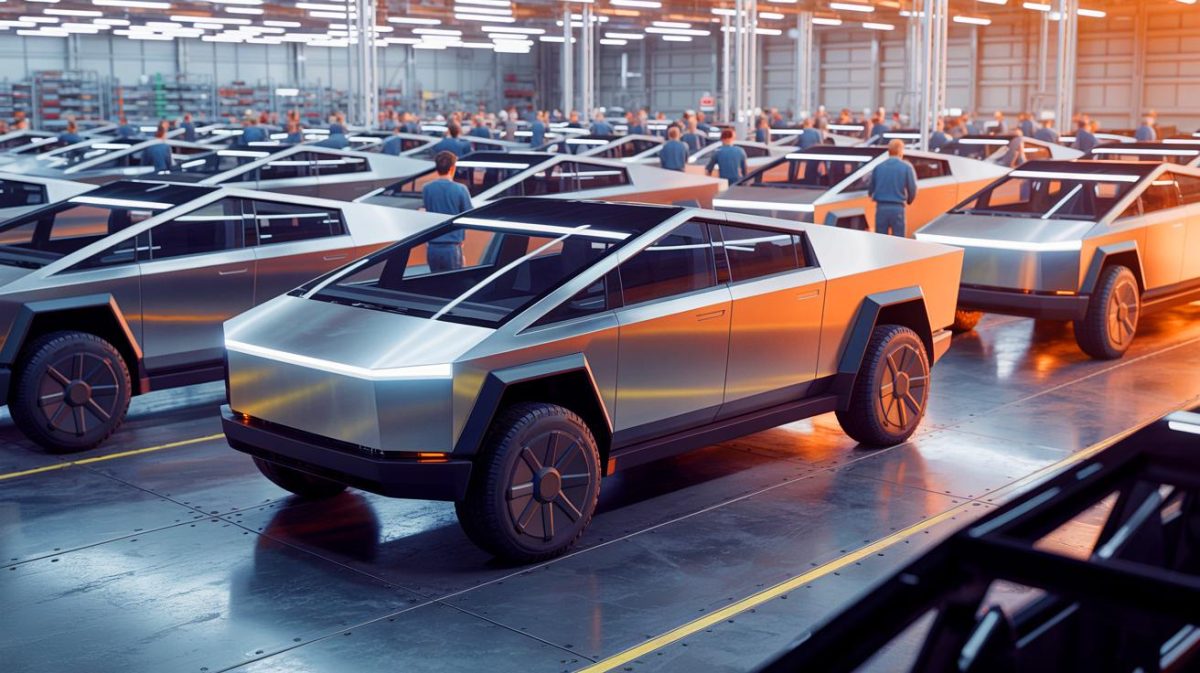| IN A NUTSHELL |
|
The Tesla Cybertruck has undeniably captured the public’s imagination with its futuristic design and bold promises. Yet, despite its iconic status on the road, it faces significant challenges. Production numbers have not met expectations, leading to substantial inventory and financial implications for Tesla. As the Cybertruck navigates these hurdles, questions arise about its future and the strategies Tesla might employ to regain momentum in the competitive electric vehicle market.
The Reality of Cybertruck Sales and Production Challenges
Tesla’s Cybertruck, with its sharp angles and stainless steel exoskeleton, was expected to revolutionize the pickup truck segment. However, the reality has been quite different. With a starting price of $82,235, the hefty 6,600-pound vehicle has not sold as anticipated. In its first full year, Tesla projected sales of up to 250,000 units annually, yet only managed to sell just under 40,000. This shortfall is significant, given the substantial investment Tesla made in its Austin Gigafactory, designed to produce the Cybertruck at scale.
Moreover, Tesla’s inventory includes approximately $200 million worth of unsold Cybertrucks, translating to around 2,400 units. This surplus has prompted Tesla to scale down production to manage inventory levels better. These developments highlight the stark contrast between Tesla’s ambitious goals and the current market dynamics. The Cybertruck’s sales slump is part of a broader trend, with Tesla’s global deliveries dropping from 387,000 to 336,681 units in the first quarter of the year. Despite offering incentives such as zero-percent financing, Tesla has struggled to maintain its sales momentum, raising questions about its future strategy.

Market Reaction and Consumer Sentiment
The Cybertruck’s struggles are not solely due to its sales figures. Consumer sentiment and market reactions have played a crucial role. Tesla’s decision not to accept Cybertrucks as trade-ins has frustrated existing owners, and the vehicle’s used prices have plummeted by 55% year over year. These developments reflect broader concerns about the vehicle’s utility and reliability, as evidenced by numerous recalls.
In a market where pickup trucks have historically maintained a consistent design due to their functional needs, the Cybertruck’s unorthodox design has proven divisive. Elon Musk’s admission of doing “zero market research” seems to have backfired, as consumers question the Cybertruck’s practicality. Furthermore, Tesla’s overall sales decline, including a 17.5% dip in Model 3 sales, suggests that the company’s challenges extend beyond the Cybertruck, impacting its brand perception and market positioning.
The Impact of Recalls and Quality Concerns
Quality issues have further compounded Tesla’s challenges with the Cybertruck. A recent recall affecting over 46,000 Cybertrucks due to loose trim pieces highlights the ongoing quality concerns. These issues follow an earlier recall related to the accelerator pedal, raising questions about Tesla’s quality control processes. Such recalls not only impact consumer confidence but also create additional financial burdens for the company.

Despite these setbacks, Tesla remains a dominant force in the electric vehicle market. The Cybertruck, despite its struggles, ended the year as America’s best-selling electric truck. This paradox underscores the vehicle’s potential if Tesla can address the quality and customer satisfaction issues. The company’s ability to navigate these challenges will be critical in determining the Cybertruck’s long-term success and Tesla’s position in the electric vehicle market.
Looking Ahead: Can Tesla Turn the Tide?
Amidst these challenges, Tesla’s resilience and innovation remain its defining traits. The company has faced obstacles before and emerged stronger, thanks to its loyal customer base and Elon Musk’s visionary leadership. A potential mid-cycle update for the Cybertruck could address some of the current issues and reignite consumer interest.
As the market for electric vehicles grows, Tesla’s ability to adapt and innovate will be crucial. The Cybertruck’s story is not just about sales figures; it’s about redefining what a pickup truck can be. Tesla’s challenge is to balance this vision with market realities, ensuring that the Cybertruck meets consumer needs while maintaining its unique identity. As we look to the future, the question remains: Will Tesla’s bold gamble with the Cybertruck ultimately pay off, or is this a cautionary tale of innovation overreach?
Did you like it? 4.4/5 (27)









Is this the first time Tesla’s faced such a significant drop in sales? 🤔
I’ve always thought the Cybertruck looked like a spaceship. Maybe it’s better suited for Mars! 😂
Quality concerns are a big deal. How can Tesla fix this before more recalls happen?
Thank you for the detailed analysis! It’s eye-opening to see where Tesla stands.
Elon Musk always has a trick up his sleeve. What’s next for the Cybertruck?
Do you think the high price is a major factor in the sales slump?
I wonder if the design was just too radical for traditional truck buyers.